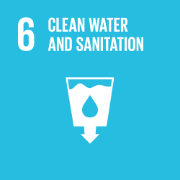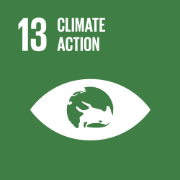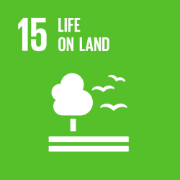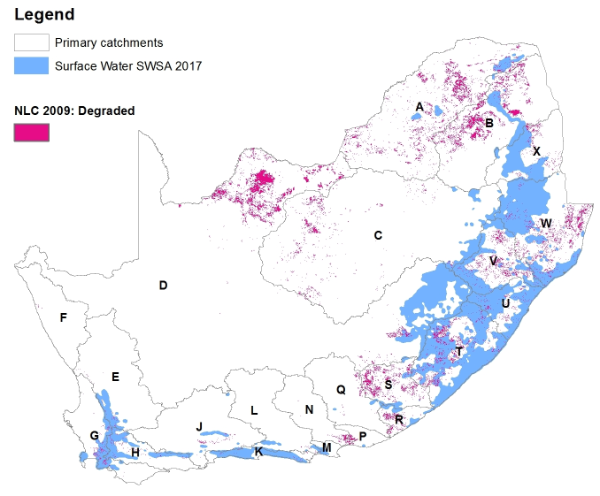Ecological Infrastructure in mitigating the impacts of drought
THE ROLE, BENEFITS AND PRIORITISATION OF ECOLOGICAL INFRASTRUCTURE (EI) IN MITIGATING THE IMPACTS OF DROUGHTS IN SOUTH AFRICA
A Water Research Commission Project (K5/2928/1-2)



Collaborators: David le Maitre (CSIR), Alta de Vos (Department of Environmental Science, Rhodes University)
April 2019 – March 2021
South Africa is an arid country with a mean annual rainfall of less than 500 mm, only 9% of which ends up as water in rivers and aquifers, so every drop is scarce and it is imperative that water is optimally used. Water supplies are unevenly distributed, only 8% of the land area yields about half the runoff (see Figure), and these major water sources need to be managed to protect the quality and quantity of the water they provide. Since most of the high yielding areas are still under natural vegetation, it is critical to ensure that these are maintained for optimal water production.
South Africa is currently experiencing a severe drought since 2015, and this has resulted in crop losses, imposition of water restrictions and significant impacts on water and food security. Droughts are likely to become more intense and more frequent in the future due to changing climatic regimes; at the same time, energy, land and water demands are expected to increase globally. This has implications for associated impacts on availability of grasses for livestock, and water and food security (due to crop losses and water availability). It is clear that South African society needs to respond more appropriately to droughts through timeous and transformative interventions, moving away from responses that do not yield long-term gains, to optimise the supply of water resources.
Humans have modified catchment properties, particularly the vegetation, to provide grazing for livestock, for cultivation, and plantations for food, wood, timber and fiber and to establish settlements (Foley et al., 2005). These modifications are necessary to meet human needs, but typically they have altered how the rainwater is partitioned, often reducing river flows or increasing the volume of floods, or both. Changes in water flows are also closely linked to sediment flows, and the reduced vegetation cover in heavily- or over-grazed lands or poorly designed cultivation may result in increases in soil erosion. Typically this triggers a negative spiral with further, more rapid erosion, sedimentation of dams and less usable water. Thus, it is crucial for people to recognise the early stages of such degradation (see accompanying Figure) and alter their land-use practices to halt further damage and restore the ecosystems that protect their catchments.
Therefore the aims of the WRC project are:
- To explain how well-managed ecological infrastructure can help to mitigate the impacts of droughts on human livelihoods and well-being and to propose strategic responses that will maintain and enhance the value of this service that people will embrace and implement.
- To provide an assessment of how the ecological infrastructure facilitates drought mitigation.
- Assessment of ecological infrastructure presence, current state and prioritisation in three focal catchments.

Figure showing the location of degradation areas in South Africa (2009 National Land Cover) relative to the surface water strategic water source areas (SWSA) by primary catchments
Last Modified: Mon, 07 Aug 2023 12:42:06 SAST
